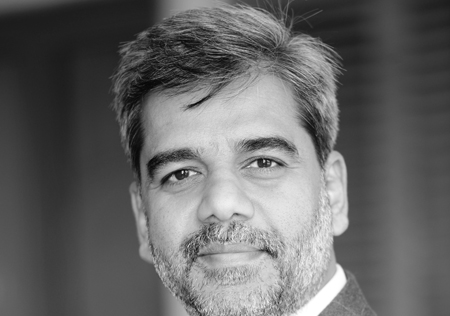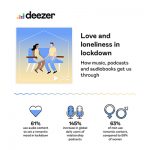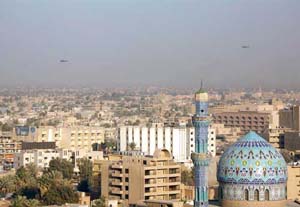This report, jointly undertaken by MediaGuru and Arab Advisors Group, analyses the state of convergence between media, gadgets and telecom in the MENA region With the fast pace of technological advances, peoples consumption patterns of content are changing. This requires content providers to cope with a new digital lifestyle, driven by smart gadgets, wireless internet […]

This report, jointly undertaken by MediaGuru and Arab Advisors Group, analyses the state of convergence between media, gadgets and telecom in the MENA region
With the fast pace of technological advances, peoples consumption patterns of content are changing. This requires content providers to cope with a new digital lifestyle, driven by smart gadgets, wireless internet and content consumption anywhere, anytime. Content is now best made available on demand over the internet, in order to dovetail with consumers lifestyle.
20 countries in the MENA region Algeria, Bahrain, Egypt, Iran, Iraq, Kuwait, Jordan, Lebanon, Libya, Mauritania, Morocco, Oman, Palestine, Qatar, Saudi Arabia, Sudan, Syria, Tunisia, the UAE and Yemen took part in a joint survey to look at convergence readiness from broadcaster and regulator perspectives. Also studied was the internet infrastructure readiness in each country.
Sanjay Salil, Managing Director, MediaGuru, says: There were some really interesting insights from this survey. While some of the MENA broadcasters are already on track, there are others who realise the importance of having content available anywhere, anytime and on any device. Broadcasters in the region have audio-visual content of great historic value and they are generating more content every day the key here is to make their content ready for internet and mobile. There is an immediate need to preserve, archive, digitise, optimise and manage these assets effectively so that these could be brought to the viewers. Quality content is always in demand, and, therefore, it offers a great opportunity for monetisation.
Here are some of the key findings from the survey:
FTA channels with online streaming services: Since September 2014, almost half of the free-to-air (FTA) channels that broadcast from the MENA region provided content online, be it live-steaming, on-demand streaming or both. This has been driven by the ongoing deployment of new internet technologies in the MENA.
The novelty of watching TV may never fade away the thrill of seeing the last-second goal make its way into the net, the moment a reality competition show winner is announced, or watching live news events as they unfold. One thing is for sure: TV viewership is changing.
Telecom operators in the MENA region have recognised user behaviour and subsequently offered their own mobile TV services with a variety of channels and content, ranging from Arabic and English series to movies and video clips.
The broadcasting culture is changing by the day and more channels are embracing the internet and acquiring training for new products and solutions, in order to integrate their conventional broadcasting experience with the digital world.
Many broadcasters are still lagging behind in embracing digital media, as the demand in home markets is limited. However, they are exploring new avenues, with an increase in content demand from the Arab diaspora outside MENA, such as For Echorouk News (Algeria), whose main driver behind providing digital content was the constant demand by viewers in Europe to watch the channel’s content through the internet because it is not available on Eutelsat.
Tunisia came first in readiness for convergence in the Maghreb and tenth in MENA. With its internet affordability and channels embracing the internet, Tunisia scored 65.5% on the Readiness for Convergence Index. Tunisian TV channels have embraced the internet in order to keep up with technology and to target different segments of society, specifically the youth segment, whether through direct internet access or apps. Maghreb 24 TV, for example, has its own development centre to develop apps on both Android and IOS. Maghreb 24 notes that people tend to watch TV through conventional methods at night but consume digital content more during the day.
Top five countries by readiness index:
Qatar: 88.2%
Qatar is thriving in the ICT sector, making it one of the top countries in the MENA; it is considered one of the most developed and fastest growing countries in ICT. Furthermore, Qatar is home to one of the most important news broadcasters in the Arab world, Al Jazeera. Qatar has 20 television channels, all of which offer online streaming.
The launch of Al Jazeera satellite channel, with the aid of its specialty pay TV sports channel beIN sports, brought Qatars radio and television sector into the limelight. Viewers in the region are accustomed to getting their content free-to-air and dont mind getting pirated and delayed version content, but when it comes to sports, the value of the content decreases dramatically as soon as the match is over. That is why users pay to get their content as soon as it happens. Aside from beINs traditional TV packages, it offers packages that are available only online.
All factors considered made it no surprise that Qatar is at the forefront of convergence readiness. This small peninsula in the Arabian Sea is continuously improving its infrastructure and is keen on providing new technologies to its market. With the infrastructure ready, the channels all online, a strong economy and significant media broadcasters, Qatar scores 88.2%, the highest on the Readiness for Convergence Index among the analysed countries.
Kuwait: 87%
Kuwaits media scene flourished to 20 channels, seven government-owned and 13 private. To meet the demands of the 57% of internet users in Kuwait, 65% of channels offer some form of online streaming. Following Qatar, Kuwait is second in readiness for convergence. With high technology levels, high income levels, operators and broadcasters offering online content and the second highest GDP per capita ($47,992) of the analysed countries, Kuwait scored 87% on the Readiness for Convergence Index.
Bahrain: 86.8%
Bahrain is third in terms of readiness for convergence. High technology levels, high income levels, operators and broadcasters that offer online content and government policies that encourage the deployment of technologies make Bahrains future in convergence bright, scoring a high 86.8% on the Readiness for Convergence Index.
While the only two channels that dont broadcast online are government entities like the Bahrain Radio and Television Corporation. The other three government channels have gone online because of high demand from people wanting to share content, especially political, on social media.
Saudi Arabia: 85%
The leading country in terms of internet penetration rate, with the most updated internet technologies and financial clout is Saudi Arabia. It came fourth, scoring 85% on the Readiness for Convergence Index.
With a large section of the population able to afford internet, Saudi Arabia has the highest internet penetration rate among the MENA countries, at 63.26% in 2014. Moreover, internet consumption is very high in Saudi Arabia.
According to Mobily, people aged between 15 and 25 (millennials) consume an average of 5GB per month through their mobile devices alone. The reason behind adopting higher internet bandwidth, in Mobilys opinion, is the heavy consumption of YouTube and online games.
TV channels in Saudi Arabia are starting to realise the importance of going online and leveraging the internet, not only through their websites but also through social media. Iqraa, an OTT platform, for example, has used social media to attract a new audience to its website and monetise digital content.
With over seven million likes on Iqraas Facebook page, there is an increase in the number of viewers of the channel, which resulted in the growth in revenues.
In addition to leveraging YouTube to host content, Saudi Arabias channels also focus on launching their own apps, which keep people directly connected to the channels and updated with all the news. For the Saudi channels, the targeted viewers through digital content are the millennials and people in their thirties. Conventional television is still the way of consuming content for older viewers.
UAE: 84.1%
The country scores a total of 84.1% on the Readiness for Convergence Index, fifth among MENA countries.
The UAE is one of the most developed and fastest growing countries in the region. Its advanced infrastructure allows relatively high levels of adoption of digital content and IPTV technologies. Home to a number of international networks as well as pay TV providers, the UAE is a key player to influencing media in the region. The high level of adoption of digital content encouraged broadcasters in the UAE to embrace the internet. By September 2014, the UAE had a total of 94 channels broadcasting free-to-air, with 56 channels providing content online. Moreover, the UAE is home to two of the most important players in the pay TV market: OSN and My-HD.
While issues relating to the quality of broadband did arise, OSN went online in mid-2014, choosing a time when the majority of countries had relatively good internet access.
Furthermore, the network has launched an app specifically designed for online viewership, at low cost and without a contract, to attract viewers and subscribers. For a network like OSN, there is a high rate of digital content adoption among viewers, with more viewers choosing online platforms.
My-HD, launched in May 2013, looks at a completely different market segment. The network is the only pay TV provider in the region that does not offer online streaming. According to experts, 95% of MENA homes dont have fixed broadband, and 91% dont even have a fixed phone line. If TV and internet are going to converge in the coming years, then it has to happen via mobile broadband. But mobile broadband is unaffordable in low-income countries.
Consider the sort of bandwidth and data plans required to watch high-definition TV for a few hours daily. People usually watch three or four hours or more of TV daily. To be able to do that for 30 days in a month, one would need about 100GB of data for HD, less for standard definition, but still far beyond the data limit of any plan that is affordable by the majority of users.
Manufacturers/vendors:
Operators in the MENA region have recognised user behaviour and subsequently offer their own mobile TV services with a variety of channels and content, ranging from Arabic and English series to movies and video clips.
According to an Imagine Communications report, broadcasters, service providers and content owners are moving rapidly towards convergent platforms, because they provide real operational efficiency and make it possible and practical to deliver services to the broadest range of consumers, however they choose to watch.
Grass Valley claims that broadcasters are looking at both quality and price equally, although they sometimes sacrifice features for price.















































































